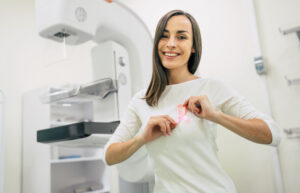Many organizations have increased awareness about breast cancer in the last several decades. All this is good, but sometimes old wives tales or myths pop up and they are repeated and spread on the internet. Let’s give you the facts and 5 myths about breast cancer symptoms.
Myth #1: People with breast cancer always find a lump
Fact: Most lumps are not cancer and not everyone feels a lump during a self exam. In the early stages of breast cancer, there may not be one. Instead, note these symptoms: nipple pain, swelling, irritation or dimpling, and nipple retraction.
Myth #2: Breast cancer is not painful
Fact: Some women with breast cancer have pain as a symptom. If you experience any pain, see your physician for evaluation. Fast-growing breast cancers can be very painful, and pain in one spot is a warning sign, especially if you are an older woman. General soreness in the breast is normal with hormonal fluctuation.
Myth #3: Redness, pain, or bloody discharge are only signs of an infection or inflammation in a new mother (mastitis)
Fact: This is a common occurrence in a young mother, but if after treatment with antibiotics the woman’s symptoms do not improve, time to see your physician for evaluation. Breast cancers in young women can present as mastitis.
Myth #4: If you can move a breast lump, it’s not cancer
Fact: Actually, early breast cancers begin by being movable. Once the lump grows larger, it will attach itself to something and then you can’t move it. Tell your physician about any lump and note anything firm like a marble.
Myth #5: Physicians can diagnose breast cancer during an exam
Fact: Neither you nor your physician can tell just by feeling if a lump is cancerous. A mammogram and an ultrasound can give you more information. If needed, a biopsy can be done on a suspicious lump and then evaluated under a microscope.
It is always better to check on a symptom rather than letting it wait until your annual mammogram. If something doesn’t feel or look right, contact Southwest Diagnostic Imaging Center to schedule an appointment for an in-depth mammogram screening.


